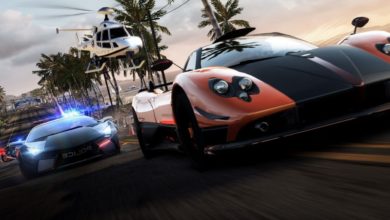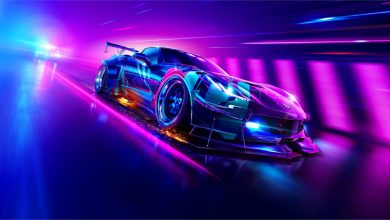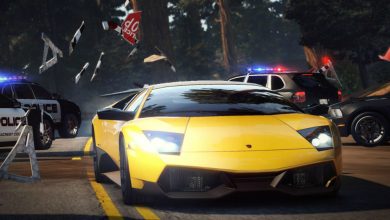After all the hype about a Criterion-made Need for Speed game, the reveal of Hot Pursuit at E3 felt a little anti-climactic. With games like Forza 2, Burnout Paradise, Grid, Pure, Modnation Racers, Blur and Split/Second pushing the racing genre forward in their own little way, going back to a formula that last worked five years ago felt a little regressive; even more so because it’s a Need for Speed game, which was for so many years the first name in arcade racing. Then again, the series has been in the doldrums for years, only slightly managing to claw its way out with Shift last year. So if there was one franchise in the industry that desperately needed a reboot, this was it.
[singlepic id=2394 w=605 float=center]
While the urban-set games like Underground had a certain charm to them, I soon grew tired of the narrow streets, neon lights and heavy traffic. So Hot Pursuit comes as welcome relief with Seacrest County’s wide open roads and sparse traffic. This fictional location, which is a mix of desert, coastal, forest, and snow-capped areas, is not only a visual treat, but also includes roads that are endlessly fun to drive on with a combination of high speed straights and long bends that demand drifting but not much braking. There are many things that work towards making Hot Pursuit a great game, but the design of Seacrest County is probably the biggest of them all.
It also helps that the game has an exceptional roster of desirable cars, from drift and off-road cars like the Impreza and Evo X, to muscle cars like the Camaro SS and Shelby GT500, and exotic supercars like the Lamborghini Reventon and McLaren F1. You name it (as long as it isn’t a Ferrari), and chances are it’s there. And the game doesn’t hold them back either. In only the third event of the career mode, you’re put behind the wheel of a blindingly fast Pagani Zonda, giving you a very early taste of the game’s incredible sense of speed. The on-the-limit-driving philosophy of the Burnout games is very much in evidence here. Hot Pursuit wants you to drive at full throttle all the time, but unlike Burnout, it also demands judicious and timely use of the brakes around corners. But here too, the emphasis is on high-speed drifting. Brake too much or scrape a barrier while drifting and you’ll lose a chunk of time.
[singlepic id=2391 w=605 float=center]
The game has free-roaming, but I don’t know why they even bothered. There’s nothing to do while free-roaming besides getting acquainted with the sights of Seacrest County; no impromptu cop chases and no random fellow racers driving around to challenge. All events in the Hot Pursuit career are entered from the world map. The career is broken up into Racers and Cops and levelling up for both is separate, so you could even say that they’re two separate careers. Good performances earn you bounty, which help level you up to unlock more cars and powerful weapons. A dozen events in, you’ll realise that Hot Pursuit is pretty scarce when it comes to event types. There are basically just three event types i.e. variations of point-to-point races, time trials, and cop chases. No Cost to the State, no pink slip one-on-ones, no eliminations. The great cars and tracks somewhat lessen the severity of this lack of variety, but the longer you play, the more apparent it becomes.
There’s a lot to do within these events though. Both cops and racers have weapons at their disposal which are mapped to the d-pad, and they’re limited in supply so you’ll have to use them wisely. Both can deploy spike strips; cops can temporarily incapacitate an opponent with an EMP surge, while racers are equipped with a jammer to protect against it; cops can call in road blocks, while racers can cause traffic crashes to impede their pursuers. Both also have a get-out-of-jail weapon. For the cops, you can call in a chopper that will help slow down racers that are way ahead of you, while racers get the turbo power up that gives you a speed boost that seems five times more powerful and longer lasting than the game’s standard nitro boost. The weapons for both are balanced and since both also get the same cars, cop vs racer battles are always fair and even.
[singlepic id=2392 w=605 float=center]
Hot Pursuit is built around the Autolog system that keeps track of your performances and pits you against players on your friends list. It constantly urges you to outdo your friends, and even if you aren’t the competitive type, you’ll find yourself retrying old events just so you can top your friends leaderboard. I’m not the kind to retry events that I’ve already completed, but Autolog made me do it. When you do beat a friend’s time, you can rub it in with some trash talk and photos on the Wall. The Autolog Recommends section shows you which friends have done better than you in certain events, and you can go into those events directly from there to restore your pride. What initially seemed like a gimmick to me actually brings a lot of replay value to the game by adding an extra layer of competitiveness to the single-player mode without feeling intrusive.
But as good as Autolog is, it doesn’t make up for the lack of a split-screen mode, which would have been ideal in a game like this. There is lots of multi-player fun to be had online though. Here again, the event modes are rather Spartan, but the 4-on-4 Hot Pursuit mode is clearly the highlight. The best part is that levelling up is common across offline and online, so cars and weapons unlocked offline are available online, and vice versa. Being a Need for Speed game, finding a full lobby is never going to be a problem, and online is an absolute blast, lack of event types notwithstanding. It would’ve been very cool if the game allowed the host to put the open world to good use by determining start and finish points for races anywhere on the map as in Burnout Paradise, but sadly that isn’t the case.
[singlepic id=2393 w=605 float=center]
Hot Pursuit is clearly not the prettiest game around, but as with all racing games, what’s important is how it looks in motion. In that respect, it’s a stunner thanks to steady framerates and Seacrest County’s beautiful and varied locations. My only (minor) gripe is the crash animations that tend to go on a little too long, after which you’re abruptly thrown back into the action, sometimes into oncoming traffic or head-on into a barrier. I can’t say much about the electronic/rock soundtrack because I turned it off so I could only listen to the roaring engines. I imagine Criterion doesn’t want the game to be played that way because the cars don’t sound nearly as impressive as they should.
Conclusion
Fast exotic cars on tracks purpose-built for high-speed races and cop chases. It’s hard to believe that the last few Need for Speed games managed to get such a simple basic philosophy so horribly wrong. With Criterion at the helm, however, that focus has now returned. But as good as Need for Speed: Hot Pursuit is, it’s hard to ignore the missed opportunities in terms of event types and the unfulfilled potential in the free roam design of Seacrest County. This game could have been a lot more, but even what it does offer is immensely enjoyable. Unlike the games I mentioned earlier, Need for Speed: Hot Pursuit doesn’t do much to move the genre forward; if anything it’s built around an eight-year-old formula. But it will remind you of why you used to love Need for Speed games, and it will make you fall in love all over again.




